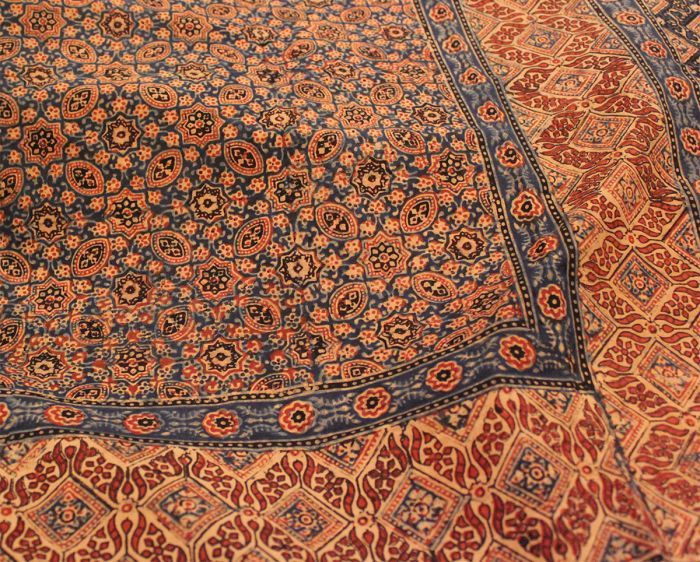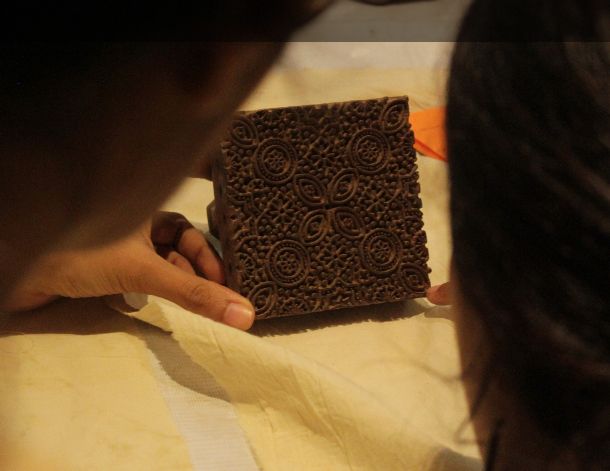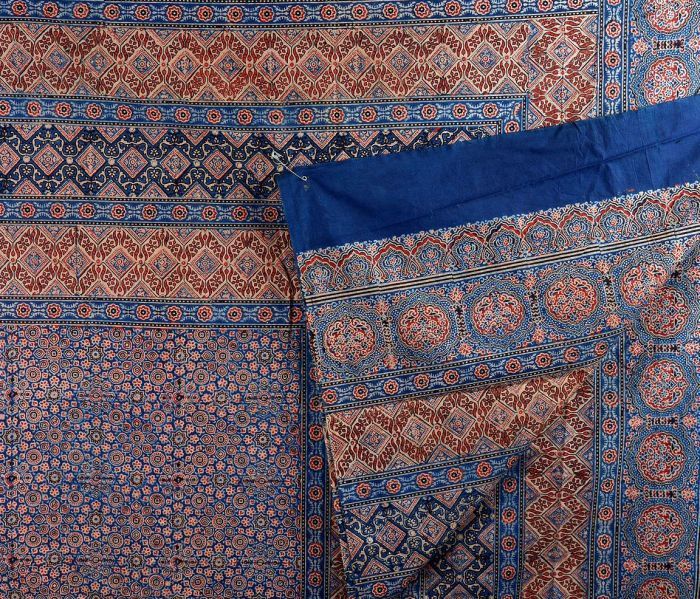
We are fascinated by the ajrakh for its complexity and the mastery of the use of natural dyes by the artisans who carry it out.

The ajrakh is a fabric traditionally cotton dyed with carved wooden blocks, using mordants and reserves in a long process. The colors used are usually red and blue with characteristic geometric and floral designs.

Some historians attribute the origin of the ajrakh to the Indus Valley civilization some 4,000 years ago, relying on archaeological remains found in the ancient city of Mohenjo Daro. This civilization flourished on the banks of the Indus River, which supplied artisans with the necessary natural materials, such as cotton, indigo and blonde.

About 400 years ago the ajrakh of the Sind lands was part of international trade with the Middle East through the Indian Ocean. At that time, some khatri communities , artisans working these textiles, settled in the Kutch desert in Gujarat, India. The ajrakh print is an ancient artistic tradition, the development of which has received the contribution of many cultures, such as the predominant designs of Iranian or Islamic influences, for its geometry and symmetry.
In 2001, the village of Dhamadka, where these artisans used to settle, was destroyed in the Gujarat earthquake. With the help of the government and NGOs, a new village was established by the name of Ajrakhpur.

The ajrakh with natural dyes is a complex process, use tannins, mordants and dyes. We continue to use very traditional ingredients such as myrobalan , lime, rusty iron, jaggery , alum, tamarind seed flour, chickpea flour, red clay, millet flour, indigo, blonde root, henna, rhubarb, lacquer, turmeric. But in recent times, there are natural ingredients such as Rubia cordifolia (Indian madder) that are increasingly difficult to get.
Over the years the recipe for the preparation of dyes remains the same, but the preparation process has undergone a change. In the past, dyes were prepared by hand and in small quantities to meet local demand in the Maldharis . But with the increasing demand for ajrakh , the natural dye is prepared using simple tools like industrial blenders, etc., and in fairly large quantities
Traditionally the ajrakh was printed on cotton, but now cotton and silks are used.
Why Hand Block Printed Kaftans Are the Ultimate Beachwear Must-Have
April 25th, 2025The Boho Lover’s Guide to Styling with Hand Block Printed Cushions
April 11th, 2025